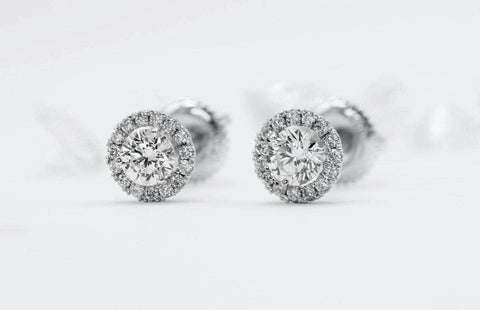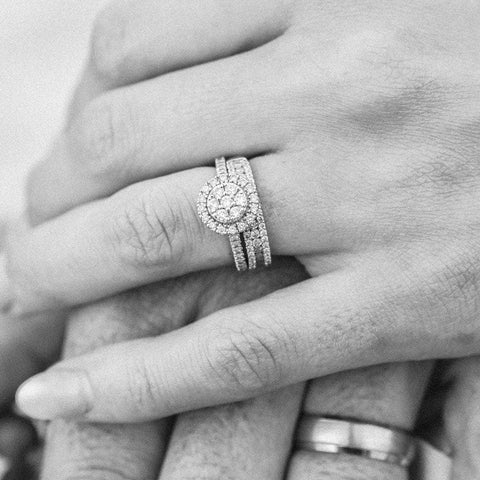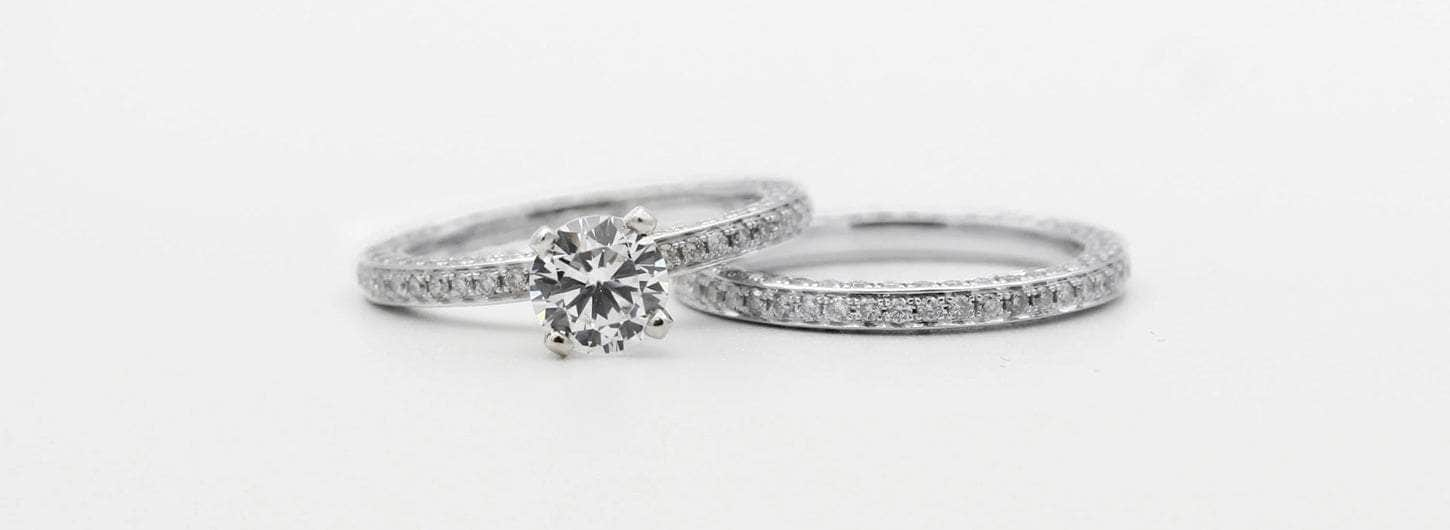Buying a diamond can feel like a lot of pressure, that’s why we have put together this in-depth guide that will give you the knowledge and confidence in finding a diamond you can fall in love with forever. With our expert knowledge and over 30 years experience working with diamonds, we are certain we can help you find your perfect diamond.
Getting to know the 4Cs
Cut
Diamond cut specifically refers to the quality of a diamond’s angles, proportions, symmetrical facets, brilliance, fire, scintillation and finishing details. We believe these factors hold the most influence on a diamond’s ability to sparkle, along with its overall beauty.
Colour
The colour of a diamond is measured by how white or colourless a diamond is. Depending on the diamond’s cut, carat weight and shape, the colour may vary among diamonds. An important aspect with colour is to determine whether it appears colourless in relation to its setting.
Clarity
A Diamond’s Clarity grade evaluates how clean a diamond is from both inclusions and blemishes. Evaluating diamond clarity involves determining the number, size, relief, nature, and position of these characteristics, as well as how these affect the overall appearance of the stone.
Carat
The carat is a unit of weight, which measures how much a diamond weighs. This allows very precise measurements to the hundredth decimal place. We believe the importance of considering all these factors when deciding on your diamond.
Diamond Settings
We believe in the importance of choosing the right diamond setting to ensure your diamond showcases its optimum brilliance and beauty. We’ve made it simple for you to understand the differences between the diamond settings so you can find one you’ll love
Claw
This diamond setting can either be a 4 or 6 claw, the minimal use of metal allows as much light to pass through the diamond, allowing for a beautiful sparkle.
Chanel
Diamonds are secured in place between vertical metal walls, creating a smooth channel. In this contemporary setting, the stones are nestled side by side with no metal in between for a consistent flow and sparkle.
Pave
In this dramatically elegant setting type, diamonds are set low and placed close together using tiny beads. The surface of the ring will appear to be encrusted with stones for a brilliant effect.
Bezel
A metal rim surrounds the diamond by the girdle to secure it in place. This setting style can create the illusion of a larger stone.
Gypsy
The diamond is placed into the metal of the ring for a secure and protected setting, allowing the stone to be smoothly level with the entire ring.
Tension
This setting allows the diamond to appear floating. The diamond is placed in-between the metal ring, which holds it securely in place.
Diamond Shapes
Which diamond shape to choose?
Diamonds come in a variety of different shapes, sizes and settings, so we want to be certain you’ll find one that’s perfectly suited to you.
Round Brilliant Cut
One of the most popular choices for engagement rings, this shape creates a stunning sparkle from just the slightest movement. The round brilliant diamond shape has 57 facets comprising 33 facets on the crown and 25 on the pavilion. Each angle of every facet is precisely calculated to reflect the most light, creating a dramatic sparkle.
Oval Cut
Oval cut diamonds are a beautiful modification on the classic round brilliant cut. This means oval cuts have a similar sparkle to the round cut diamond but become distinct through the ovals unique shape. The Oval shape elongates the finger to appear longer and thinner, complimenting a wide range of different hand shapes and sizes. Whilst oval cuts are a more recent cut from the 1900’s, it has proven to be a lasting and beloved style symbolising the longevity of your relationship.
Emerald Cut
The Emerald Cut Diamond flaunts an elongated, rectangular shape and chiselled step cuts, with straight linear facets arranged parallel to one another. To add stability and prevention of fractures, the corners of the Emerald diamond are usually cropped. These diamonds are a popular choice for those whom love a larger stone.
Marquise Cut
Also known as ‘boat-shaped’, the elongated shape of the Marquise diamond gives you a visually larger diamond, similar to the Oval shape, this can make the finger appear longer and thinner. Most Marquise rings feature a vertical placement, set in the more traditional north-south setting for a more traditional style.
Pear Shaped Cut
The pear diamond—often referred to as the teardrop or pendeloque cut—is unique to any other diamond cut. Combining the Marquise and oval cuts with one rounded end and a point on the other, its signature silhouette is instantly recognised for its breath-taking sparkle.
Princess Cut
A princess cut diamond has a square shape from the view above offering excellent brilliance and a contemporary feel. Princess cuts are amongst the highest carat diamonds and are a very popular engagement ring choice. If you prefer a maximum sparkle in a modern design, this is the ring cut for you.

A-Z Glossary
A-Z Glossary of important diamond terms

Say Yes with Emson Haig
Expert advice on choosing your diamonds


